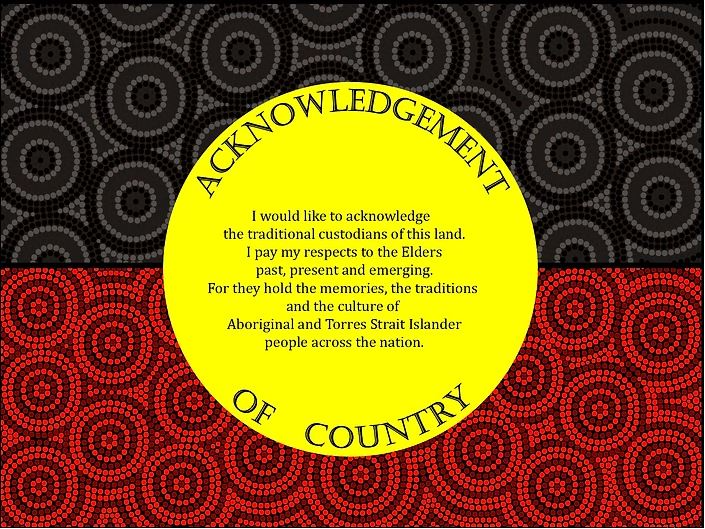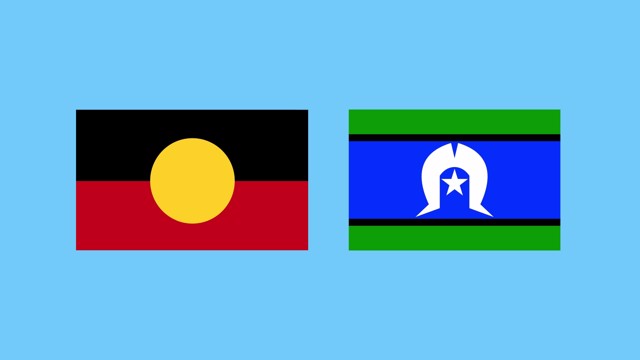The Significance of a Welcome to Country and Acknowledgement of Country
Written by National Blog Editor Maddie Crothers in collaboration with members of the Kumpul Committee: Kirby Taylor, Peter Rothwell and Rohan Iyer
Indonesian translation by AIYA National Translator Clara Sidharta

Overview
Australia is home to the world’s oldest continuing cultures. Aboriginal and Torres Strait Islander people have lived in Australia for more than 60,000 years. In lore, Aboriginal and Torres Strait Islander people have been in Australia from Creation or ‘time immemorial’. The Welcome to Country and Acknowledgement of Country are customs which recognise Aboriginal and Torres Strait Islanders as the original inhabitants of Australia.
The Welcome to Country and Acknowledgement of Country are important aspects of Australian culture that take place at the start of meetings, functions, conferences, ceremonies, sporting and cultural events, and more.
It is important for foreign visitors to understand when and how the practice is done, who by and the meaning behind the custom. Ensuring a Welcome to, or Acknowledgement of, Country is performed demonstrates your respect for Aboriginal and Torres Strait Islander peoples.
What is a Welcome to and Acknowledgement of Country?
Firstly, it is important to understand the difference between a Welcome to Country and Acknowledgement of Country. A Welcome to Country is carried out by the Traditional Owners or Custodians of the land on which it is being performed e.g. a Wiradjuri Elder would generally only conduct a Welcome to Country when on Wiradjuri land. An Acknowledgement of Country, however, can be carried out by any individual to demonstrate awareness of, and respect for, the Traditional Owners or Custodians where an event is taking place.
Country is fundamental to the identity of Aboriginal and Torres Strait Islander peoples. Land embodies several intrinsic aspects of traditional life: spirituality, culture, language, family, ancestral connection, law, identity and more. Traditionally, entering a neighbouring Country without permission or an invitation was prohibited. Accordingly, the Welcome to Country served as an important diplomatic custom, allowing visitors safe passage with the agreement that visitors respect their hosts protocols and rules. Ngambri Elder Matilda House Williams states that the Welcome to Country is important as it signifies respect towards, and acknowledgement of, Traditional Owners.
Whilst the Welcome to Country is an age-old custom, as Yorta Yorta and Dja Dja Wurrung man Tiriki Onus notes, the Acknowledgement of Country is more contemporary, growing in prevalence since the 1980s. The Welcome to Country and Acknowledgement of Country were formally adopted by Parliament in 2008 by then Prime Minister, Kevin Rudd. This was a significant landmark in Australia’s journey towards reconciliation.
Organising a Welcome to Country or Delivering an Acknowledgement of Country
A Welcome to Country is performed by a Traditional Owner or Custodian and might be carried out through speech, dance, song or ceremony. Generally, a Welcome to Country will be delivered at the start of a larger and/or more formal event. To arrange a Welcome to Country, you can contact a representative from the local NIAA office or research the Traditional Owner group in your area and contact the respective Land Council or representative organisation.
An Acknowledgement of Country is delivered at the start of any given event. There are no set protocols or wording but an Acknowledgement of Country should be genuine and meaningful.
Generally, an Acknowledgement of Country will reference the Traditional Owners or Custodians of a specific area. For reference, AIATSIS’ 1996 map presents a general guide (although not fixed) of boundaries and locations of language, social and nation groups of Aboriginal Australia.
An example of an Acknowledgement of Country is provided by the Australian Government:
‘I begin today by acknowledging the <insert name of people here (e.g. Ngunnawal)> people, Traditional Custodians of the land on which we <gather/meet> today, and pay my respects to their Elders past and present. I extend that respect to Aboriginal and Torres Strait Islander peoples here today.’
The Australian Government also provides a format for a more general Acknowledgement of Country when there are disputes regarding traditional land ownership.
‘I begin today by acknowledging the Traditional Custodians of the land on which we <gather/meet> today, and pay my respects to their Elders past and present. I extend that respect to Aboriginal and Torres Strait Islander peoples here today.’

How can non-Australians show respect?
The most effective way for non-Australians to show respect is to actively learn about Aboriginal and Torres Strait Islander cultures, histories and customs. This will allow a deeper understanding of both the Welcome to Country and Acknowledgement of Country.
It is important to note that Australia is made up of many different and distinct Aboriginal and Torres Strait Islander groups, each with their own culture, language, beliefs and practices. It is also important to note the difference between Aboriginal peoples and Torres Strait Islanders; Aboriginal peoples are native to mainland Australia, whilst Torres Strait Islanders are indigenous to the hundreds of small islands to the north of the mainland.
Language is important too. There are conventions for using respectful language when referring to Aboriginal and Torres Strait Islander peoples such as capitalising the first letter for “Aboriginal”, “Indigenous” and “Elder”.
Non-Australians should also be aware that there are several significant dates and events for Aboriginal and Torres Strait Islanders in Australia. Notably, National Sorry Day on the 26th of May, which acknowledges the mistreatment and injustices of the Stolen Generation and NAIDOC Week in July, which celebrates Aboriginal and Torres Strait Islander peoples’ histories, cultures and achievements.
An Ongoing Commitment
The Welcome to Country and Acknowledgement of Country are meaningful opportunities for cultural exchange and awareness. Nonetheless, some have noted that Acknowledgements of Country can be tokenistic, especially when viewed merely as protocol rather than an opportunity to genuinely recognise and pay respect to Traditional Owners.
Yamatji and Budimia man Rhys Paddick from Acknowledge This! reminds us that it is important to ensure an Acknowledgement of Country is conducted in an authentic manner. Furthermore, to demonstrate further support to Aboriginal and Torres Strait Islander communities, groups and organisations should continue to make worthwhile contributions and actions towards reconciliation.
